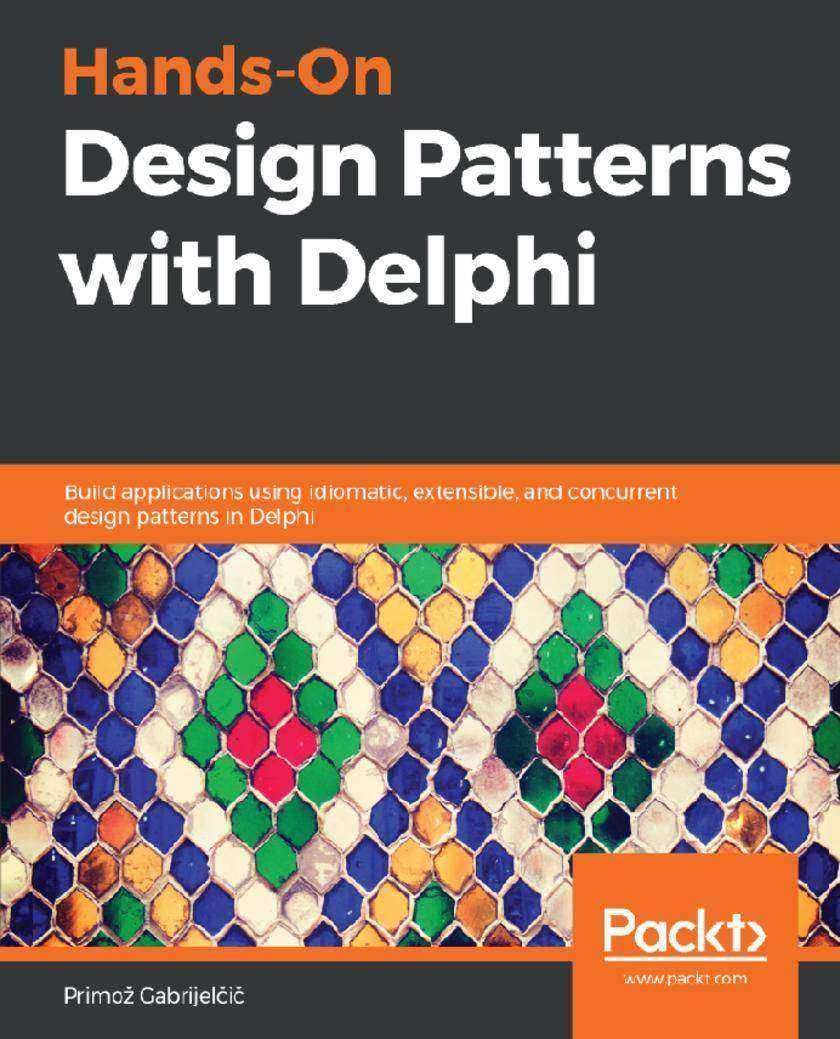
Hands-On Design Patterns with Delphi
¥81.74
Get up to speed with creational, structural, behavioral and concurrent patterns in Delphi to write clear, concise and effective code Key Features * Delve into the core patterns and components of Delphi in order to master your application's design * Brush up on tricks, techniques, and best practices to solve common design and architectural challenges * Choose the right patterns to improve your program’s efficiency and productivity Book Description Design patterns have proven to be the go-to solution for many common programming scenarios. This book focuses on design patterns applied to the Delphi language. The book will provide you with insights into the language and its capabilities of a runtime library. You'll start by exploring a variety of design patterns and understanding them through real-world examples. This will entail a short explanation of the concept of design patterns and the original set of the 'Gang of Four' patterns, which will help you in structuring your designs efficiently. Next, you'll cover the most important 'anti-patterns' (essentially bad software development practices) to aid you in steering clear of problems during programming. You'll then learn about the eight most important patterns for each creational, structural, and behavioral type. After this, you'll be introduced to the concept of 'concurrency' patterns, which are design patterns specifically related to multithreading and parallel computation. These will enable you to develop and improve an interface between items and harmonize shared memories within threads. Toward the concluding chapters, you'll explore design patterns specific to program design and other categories of patterns that do not fall under the 'design' umbrella. By the end of this book, you'll be able to address common design problems encountered while developing applications and feel confident while building scalable projects. What you will learn * Gain insights into the concept of design patterns * Study modern programming techniques with Delphi * Keep up to date with the latest additions and program design techniques in Delphi * Get to grips with various modern multithreading approaches * Discover creational, structural, behavioral, and concurrent patterns * Determine how to break a design problem down into its component parts Who this book is for Hands-On Design Patterns with Delphi is aimed at beginner-level Delphi developers who want to build scalable and robust applications. Basic knowledge of Delphi is a must.
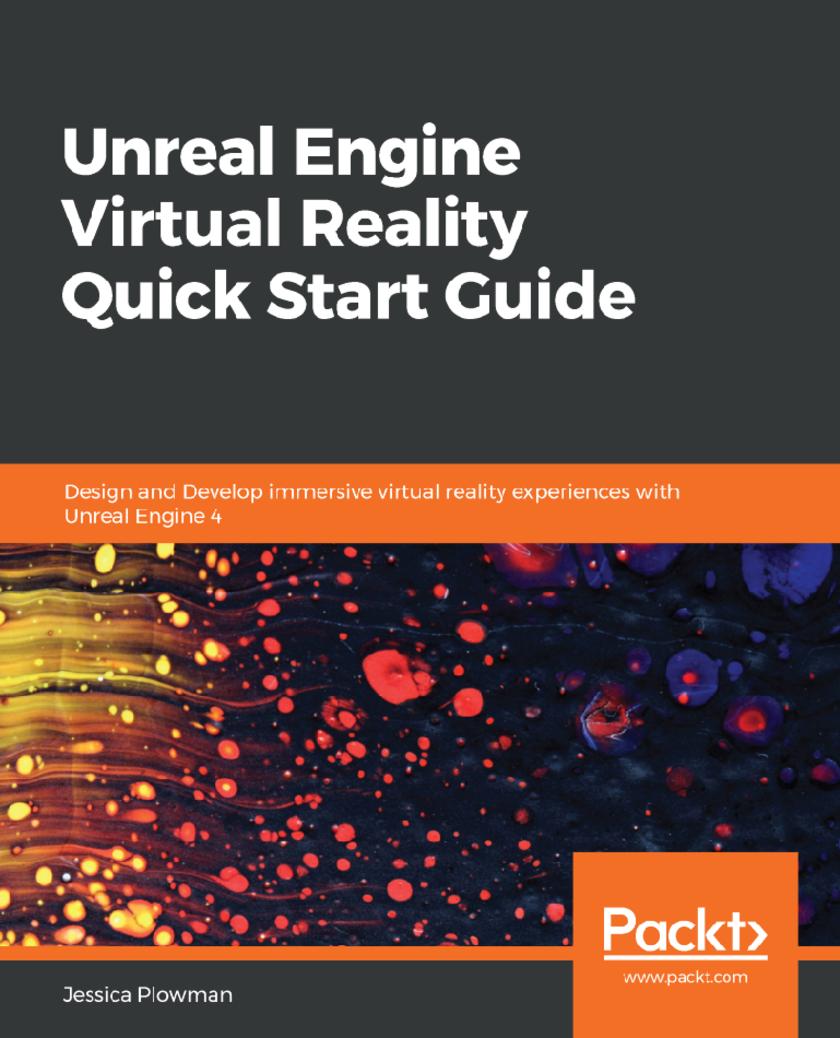
Unreal Engine Virtual Reality Quick Start Guide
¥54.49
Unreal Engine 4 for virtual reality game design, development, User Experience design techniques and Blueprint programming to create virtual reality gameplay for HTC Vive, Oculus Rift, PSVR, and Windows Mixed Reality headsets. Key Features * Build VR games from scratch with the power of Unreal Engine 4 * Learn User Experience design practices to take your VR game to the next level * Understand the best practices to creating art for games on HTC Vive, Oculus Rift, and PSVR Book Description With the ability to put players directly in the game, virtual reality gives users the chance to experience digital worlds directly. Nevertheless, many designers are unsure where to start when working with this amazing technology. With this book, you will learn user experience design processes and create immersive gameplay experiences designed for entertainment and player comfort. Using the power of Unreal Engine 4’s Blueprint visual scripting language, you will build player interaction and locomotion systems from scratch and use these flexible systems to create a sample game, as well as develop functional 2D and 3D user interfaces for players to interact with. And also learn the best practices for creating game art for virtual reality. Finally, you will learn how to test your application with your target audience and finalize your game for distribution. By the end of this book, you will have the knowledge to be able to make the leap from traditional game development to creating immersive virtual reality experiences using Unreal Engine 4. What you will learn * Understand how to get started with VR development in Unreal Engine 4 * Design and create interaction and locomotion systems from scratch * Plan and program a sample game for VR * Understand how VR affects user experience and user interfaces * Discuss what is needed to create optimized art for VR * Test your game with users and prepare for distribution Who this book is for The audience for this book is intermediate or advanced users of Unreal Engine 4 but who have not begun working with VR technology. These users are familiar with the game engine and have an interest in VR technology. They are just beginning to explore the VR features that the game engine has to offer.
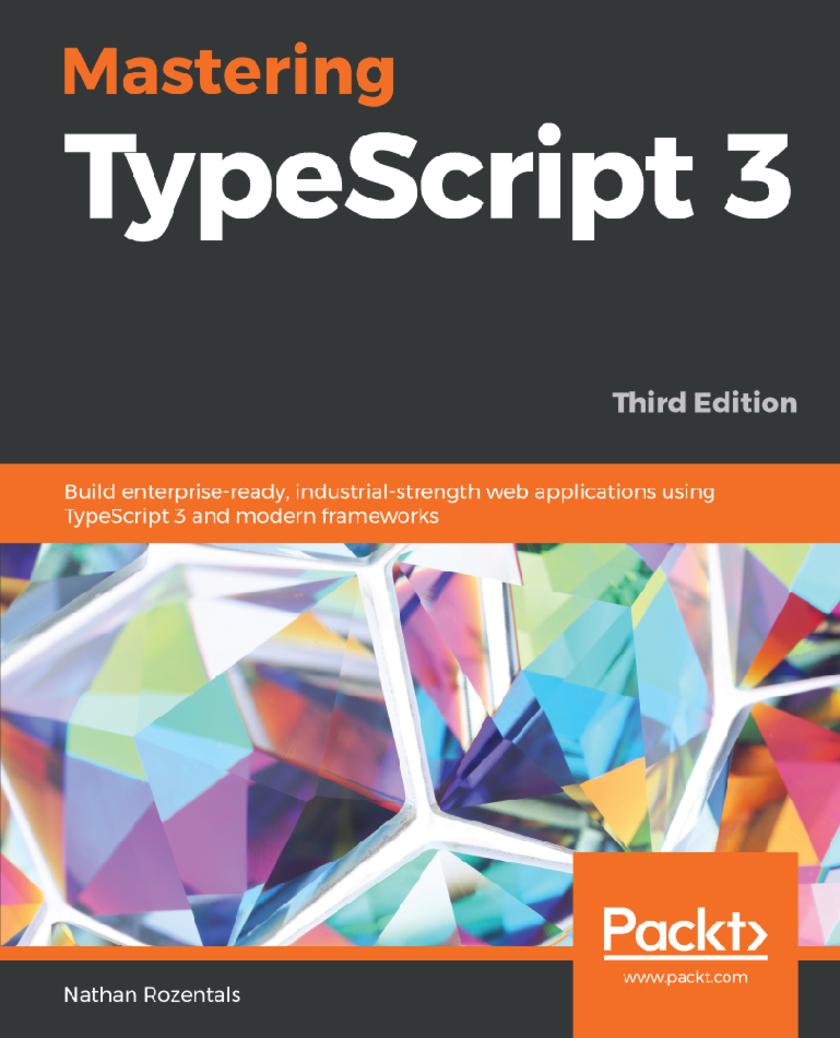
Mastering TypeScript 3
¥90.46
Master the TypeScript language and its latest features. Explore modern application frameworks and utilize industry best practices in TDD, OOP and UI Design. Key Features * Learn the key features of TypeScript 3 and explore advanced language features through in-depth discussions. * Use TypeScript with modern frameworks including Backbone, Angular, Aurelia, React, and Node. * Explore TDD practices, OOP techniques, and industry best practices to create high-quality, modular, and adaptable applications. Book Description TypeScript is both a language and a set of tools to generate JavaScript. It was designed by Anders Hejlsberg at Microsoft to help developers write enterprise-scale JavaScript. Starting with an introduction to the TypeScript language, before moving on to basic concepts, each section builds on previous knowledge in an incremental and easy-to-understand way. Advanced and powerful language features are all covered, including asynchronous programming techniques, decorators, and generics. This book explores many modern JavaScript and TypeScript frameworks side by side in order for the reader to learn their respective strengths and weaknesses. It will also thoroughly explore unit and integration testing for each framework. Best-of-breed applications utilize well-known design patterns in order to be scalable, maintainable, and testable. This book explores some of these object-oriented techniques and patterns, and shows real-world implementations. By the end of the book, you will have built a comprehensive, end-to-end web application to show how TypeScript language features, design patterns, and industry best practices can be brought together in a real-world scenario. What you will learn * Gain insights into core and advanced TypeScript language features * Integrate existing JavaScript libraries and third-party frameworks using declaration files * Target popular JavaScript frameworks, such as Angular, React, and more * Create test suites for your application with Jasmine and Selenium * Organize your application code using modules, AMD loaders, and SystemJS * Explore advanced object-oriented design principles * Compare the various MVC implementations in Aurelia, Angular, React, and more Who this book is for This guide to the TypeScript that starts with basic concepts, and then builds on this knowledge to introduce more advanced language features and frameworks. No prior knowledge of JavaScript is required, although some prior programming experience is assumed. If you are keen to learn TypeScript, this book will give you all of the necessary knowledge and skills to tackle any TypeScript project. If you are already an experienced JavaScript or TypeScript developer, then this book will take your skills to the next level. Learn how to use TypeScript with a multitude of modern frameworks, and choose the best framework for your project requirements. Investigate techniques for Test Driven Development, explore industry-standard design patterns, and learn how to put together a full production-ready TypeScript application.
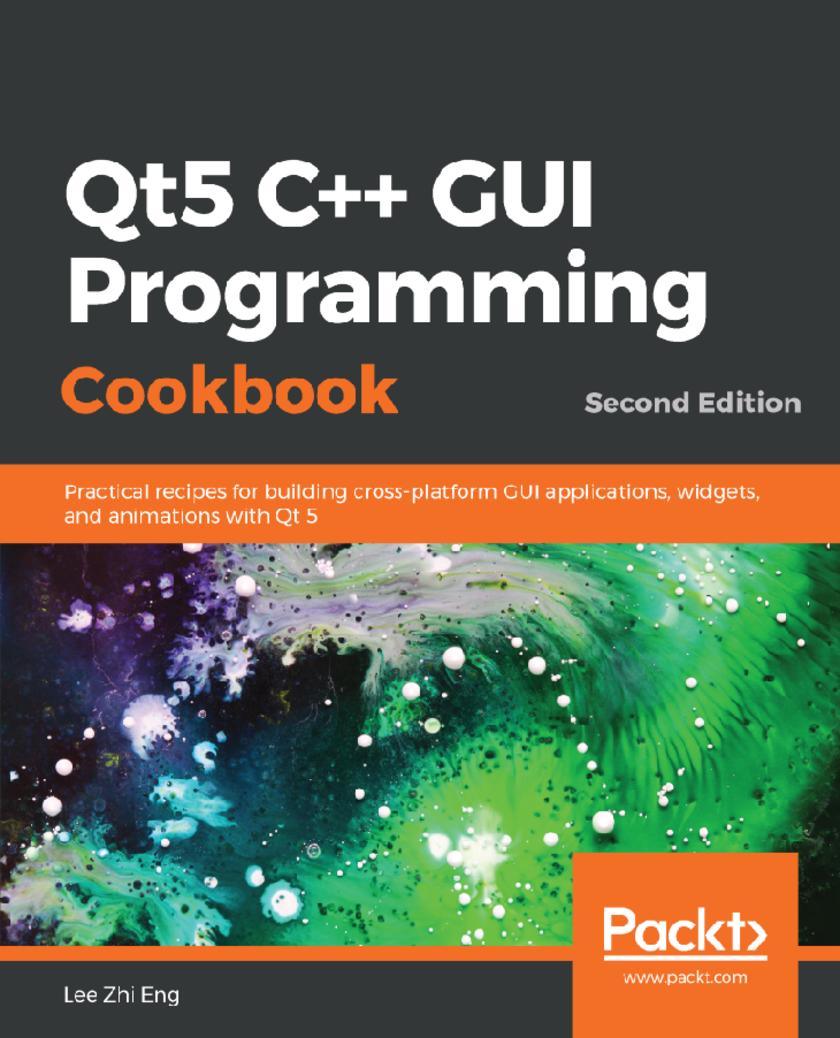
Qt5 C++ GUI Programming Cookbook
¥73.02
Use Qt 5 to design and build functional, appealing, and user-friendly graphical user interfaces (GUIs) for your applications. Key Features * Learn to use Qt 5 to design and customize the look and feel of your application * Improve the visual quality of an application by using graphics rendering and animation * Understand the balance of presentation and web content that will make an application appealing yet functional Book Description With the growing need to develop GUIs for multiple targets and multiple screens, improving the visual quality of your application becomes important so that it stands out from your competitors. With its cross-platform ability and the latest UI paradigms, Qt makes it possible to build intuitive, interactive, and user-friendly user interfaces for your applications. Qt5 C++ GUI Programming Cookbook, Second Edition teaches you how to develop functional and appealing user interfaces using the latest version of QT5 and C++.?This book will help you learn a variety of topics such as GUI customization and animation, graphics rendering, implementing Google Maps, and more. You will also be taken through advanced concepts like asynchronous programming, event handling using signals and slots, network programming, various aspects of optimizing your application. By the end of the book, you will be confident to design and customize GUI applications that meet your clients' expectations and have an understanding of best practice solutions for common problems. What you will learn * Animate GUI elements using Qt5's built-in animation system * Draw shapes and 2D images using Qt5's powerful rendering system * Implement an industry-standard OpenGL library in your project * Build a mobile app that supports touch events and exports it onto devices * Parse and extract data from an XML file and present it on your GUI * Interact with web content by calling JavaScript functions from C++ * Access MySQL and SQLite databases to retrieve data and display it on your GUI Who this book is for This intermediate-level book is designed for those who want to develop software using Qt 5. If you want to improve the visual quality and content presentation of your software application, this book is for you. Prior experience of C++ programming is required.
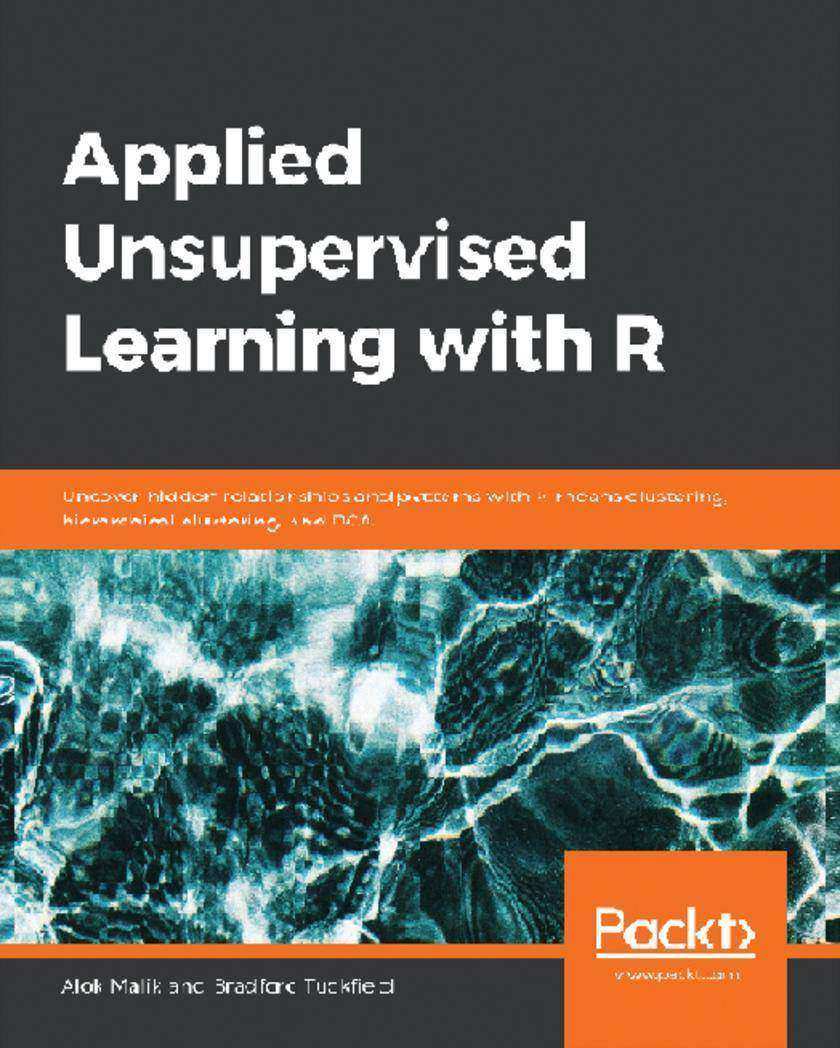
Applied Unsupervised Learning with R
¥63.21
Design clever algorithms that discover hidden patterns and draw responses from unstructured, unlabeled data. Key Features * Build state-of-the-art algorithms that can solve your business' problems * Learn how to find hidden patterns in your data * Revise key concepts with hands-on exercises using real-world datasets Book Description Starting with the basics, Applied Unsupervised Learning with R explains clustering methods, distribution analysis, data encoders, and features of R that enable you to understand your data better and get answers to your most pressing business questions. This book begins with the most important and commonly used method for unsupervised learning - clustering - and explains the three main clustering algorithms - k-means, divisive, and agglomerative. Following this, you'll study market basket analysis, kernel density estimation, principal component analysis, and anomaly detection. You'll be introduced to these methods using code written in R, with further instructions on how to work with, edit, and improve R code. To help you gain a practical understanding, the book also features useful tips on applying these methods to real business problems, including market segmentation and fraud detection. By working through interesting activities, you'll explore data encoders and latent variable models. By the end of this book, you will have a better understanding of different anomaly detection methods, such as outlier detection, Mahalanobis distances, and contextual and collective anomaly detection. What you will learn * Implement clustering methods such as k-means, agglomerative, and divisive * Write code in R to analyze market segmentation and consumer behavior * Estimate distribution and probabilities of different outcomes * Implement dimension reduction using principal component analysis * Apply anomaly detection methods to identify fraud * Design algorithms with R and learn how to edit or improve code Who this book is for Applied Unsupervised Learning with R is designed for business professionals who want to learn about methods to understand their data better, and developers who have an interest in unsupervised learning. Although the book is for beginners, it will be beneficial to have some basic, beginner-level familiarity with R. This includes an understanding of how to open the R console, how to read data, and how to create a loop. To easily understand the concepts of this book, you should also know basic mathematical concepts, including exponents, square roots, means, and medians.
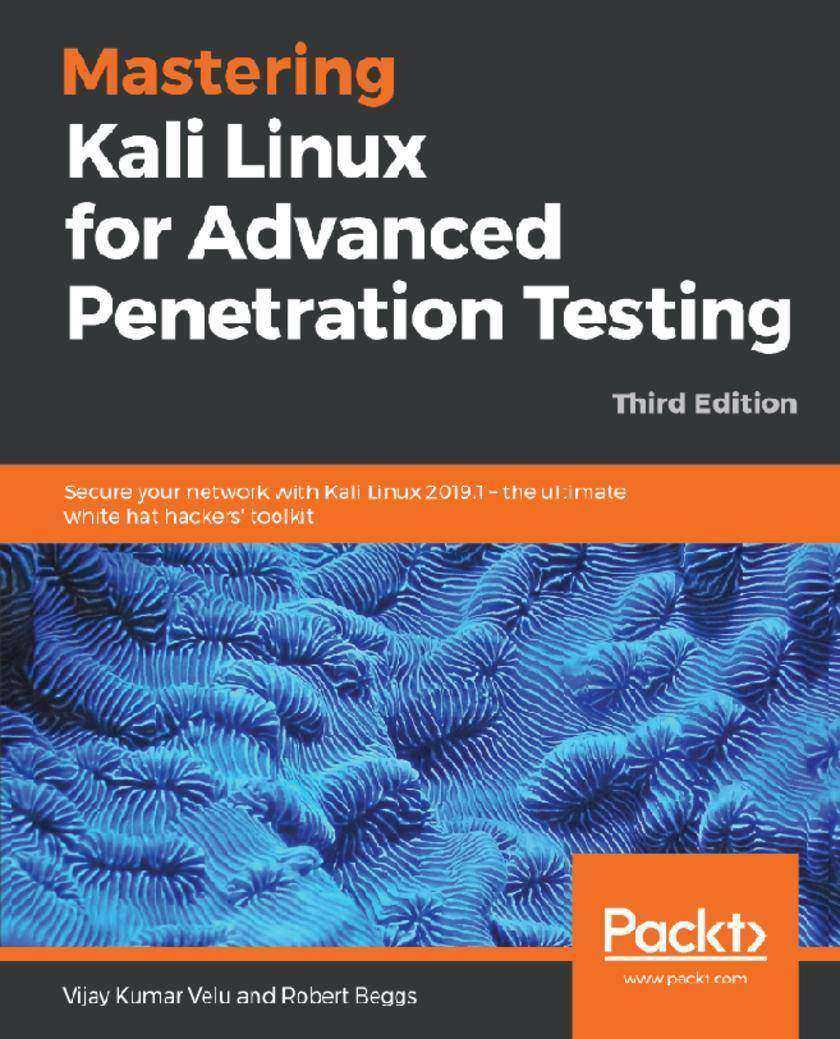
Mastering Kali Linux for Advanced Penetration Testing
¥90.46
A practical guide to testing your infrastructure security with Kali Linux, the preferred choice of pentesters and hackers Key Features * Employ advanced pentesting techniques with Kali Linux to build highly secured systems * Discover various stealth techniques to remain undetected and defeat modern infrastructures * Explore red teaming techniques to exploit secured environment Book Description This book takes you, as a tester or security practitioner, through the reconnaissance, vulnerability assessment, exploitation, privilege escalation, and post-exploitation activities used by pentesters. To start with, you'll use a laboratory environment to validate tools and techniques, along with an application that supports a collaborative approach for pentesting. You'll then progress to passive reconnaissance with open source intelligence and active reconnaissance of the external and internal infrastructure. You'll also focus on how to select, use, customize, and interpret the results from different vulnerability scanners, followed by examining specific routes to the target, which include bypassing physical security and the exfiltration of data using a variety of techniques. You'll discover concepts such as social engineering, attacking wireless networks, web services, and embedded devices. Once you are confident with these topics, you'll learn the practical aspects of attacking user client systems by backdooring with fileless techniques, followed by focusing on the most vulnerable part of the network – directly attacking the end user. By the end of this book, you'll have explored approaches for carrying out advanced pentesting in tightly secured environments, understood pentesting and hacking techniques employed on embedded peripheral devices. What you will learn * Configure the most effective Kali Linux tools to test infrastructure security * Employ stealth to avoid detection in the infrastructure being tested * Recognize when stealth attacks are being used against your infrastructure * Exploit networks and data systems using wired and wireless networks as well as web services * Identify and download valuable data from target systems * Maintain access to compromised systems * Use social engineering to compromise the weakest part of the network - the end users Who this book is for This third edition of Mastering Kali Linux for Advanced Penetration Testing is for you if you are a security analyst, pentester, ethical hacker, IT professional, or security consultant wanting to maximize the success of your infrastructure testing using some of the advanced features of Kali Linux. Prior exposure of penetration testing and ethical hacking basics will be helpful in making the most out of this book.
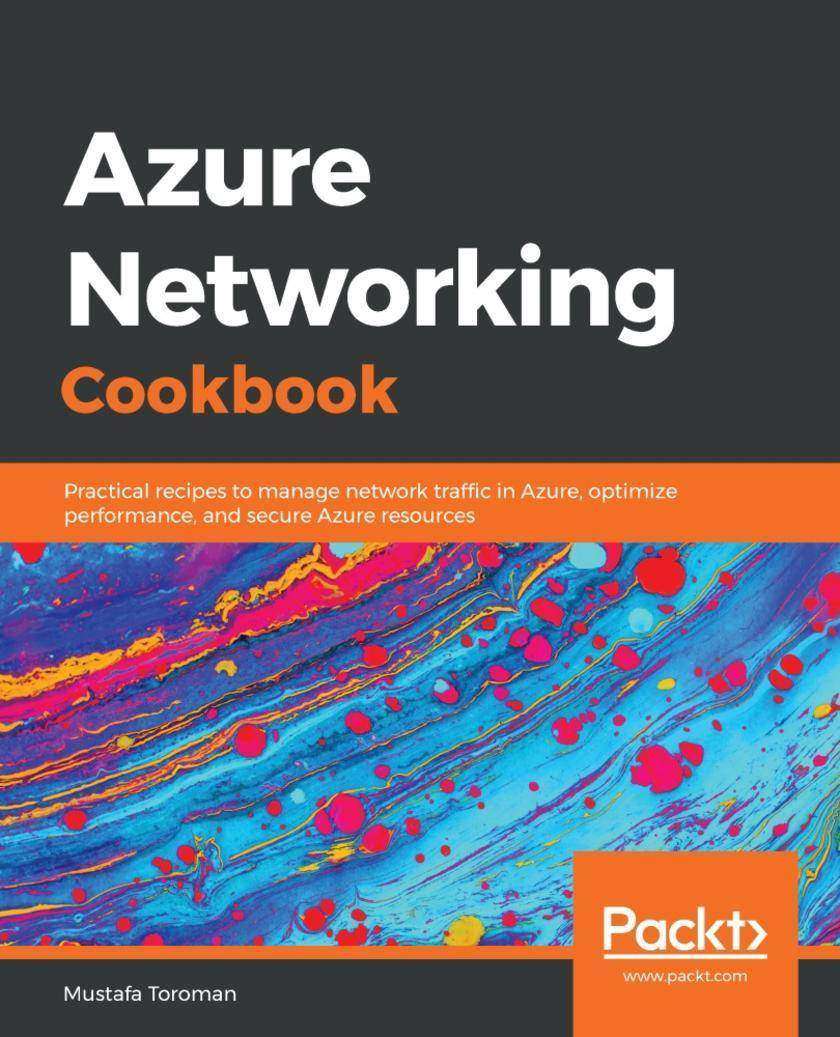
Azure Networking Cookbook
¥63.21
Learn to distribute network traffic, optimize application delivery, and defend network-level threats. Key Features * Quickly get up and running with Azure networking solutions * Level-up your cloud networking skills by planning, implementing, configuring, and securing your infrastructure network with Azure * Leverage Azure networking services to provide applications highly available and fault tolerant environment Book Description Microsoft provides organizations with an effective way of managing their network with Azure's networking services. No matter the size of your organization, Azure provides a way to highly reliable performance and secure connectivity with its networking services. The book starts with an introduction to the Azure networking like creating Azure virtual networks, designing address spaces and subnets. Then you will learn to create and manage network security groups, application security groups, and IP addresses in Azure. Gradually, we move on to various aspects like S2S, P2S, and Vnet2Vnet connections, DNS and routing, load balancers and traffic manager. This book will cover every aspect and function required to deliver practical recipes to help readers learn from basic cloud networking practices to planning, implementing, and securing their infrastructure network with Azure. Readers will not only be able to upscale their current environment but will also learn to monitor, diagnose, and ensure secure connectivity. After learning to deliver a robust environment readers will also gain meaningful insights from recipes on best practices. By the end of this book, readers will gain hands-on experience in providing cost-effective solutions that benefit organizations. What you will learn * Learn to create Azure networking services * Understand how to create and work on hybrid connections * Configure and manage Azure network services * Learn ways to design high availability network solutions in Azure * Discover how to monitor and troubleshoot Azure network resources * Learn different methods of connecting local networks to Azure virtual networks Who this book is for This book is targeted towards cloud architects, cloud solution providers, or any stakeholders dealing with networking on the Azure cloud. Some prior understanding of Microsoft Azure will be a plus point.
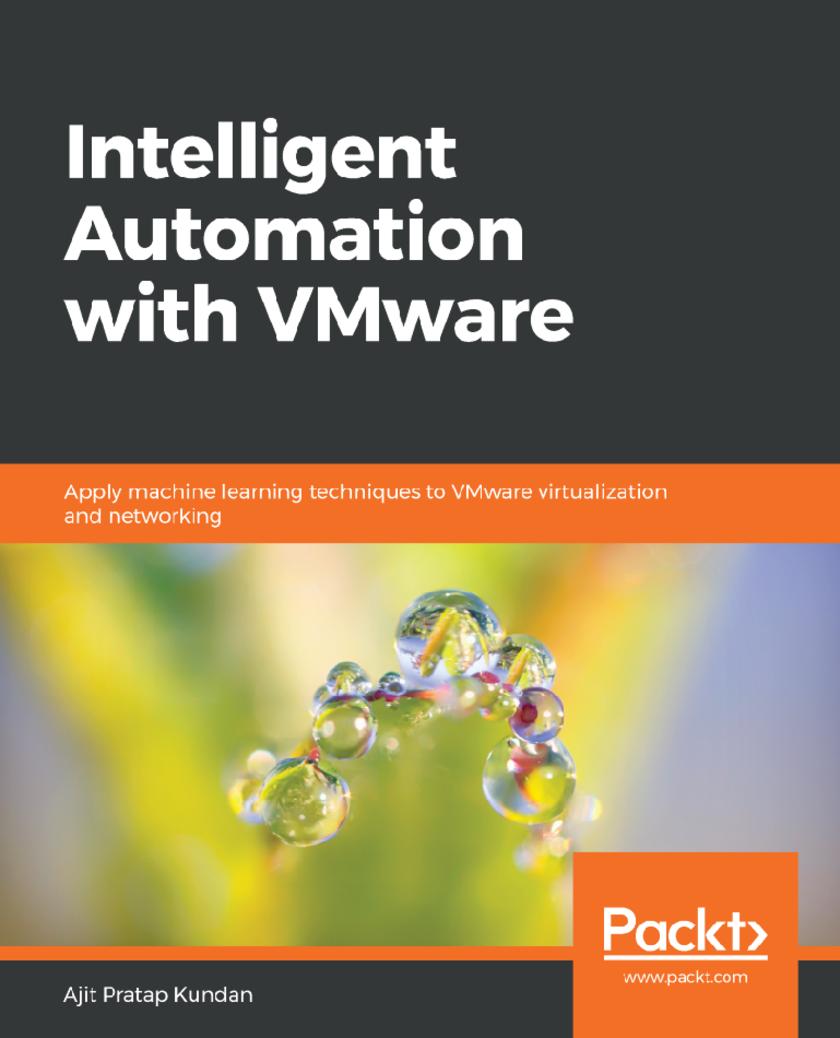
Intelligent Automation with VMware
¥73.02
Use self-driven data centers to reduce management complexity by deploying Infrastructure as Code to gain value from investments. Key Features * Add smart capabilities in VMware Workspace ONE to deliver customer insights and improve overall security * Optimize your HPC and big data infrastructure with the help of machine learning * Automate your VMware data center operations with machine learning Book Description This book presents an introductory perspective on how machine learning plays an important role in a VMware environment. It offers a basic understanding of how to leverage machine learning primitives, along with a deeper look into integration with the VMware tools used for automation today. This book begins by highlighting how VMware addresses business issues related to its workforce, customers, and partners with emerging technologies such as machine learning to create new, intelligence-driven, end user experiences. You will learn how to apply machine learning techniques incorporated in VMware solutions for data center operations. You will go through management toolsets with a focus on machine learning techniques. At the end of the book, you will learn how the new vSphere Scale-Out edition can be used to ensure that HPC, big data performance, and other requirements can be met (either through development or by fine-tuning guidelines) with mainstream products. What you will learn * Orchestrate on-demand deployments based on defined policies * Automate away common problems and make life easier by reducing errors * Deliver services to end users rather than to virtual machines * Reduce rework in a multi-layered scalable manner in any cloud * Explore the centralized life cycle management of hybrid clouds * Use common code so you can run it across any cloud Who this book is for This book is intended for those planning, designing, and implementing the virtualization/cloud components of the Software-Defined Data Center foundational infrastructure. It helps users to put intelligence in their automation tasks to get self driving data center. It is assumed that the reader has knowledge of, and some familiarity with, virtualization concepts and related topics, including storage, security, and networking.
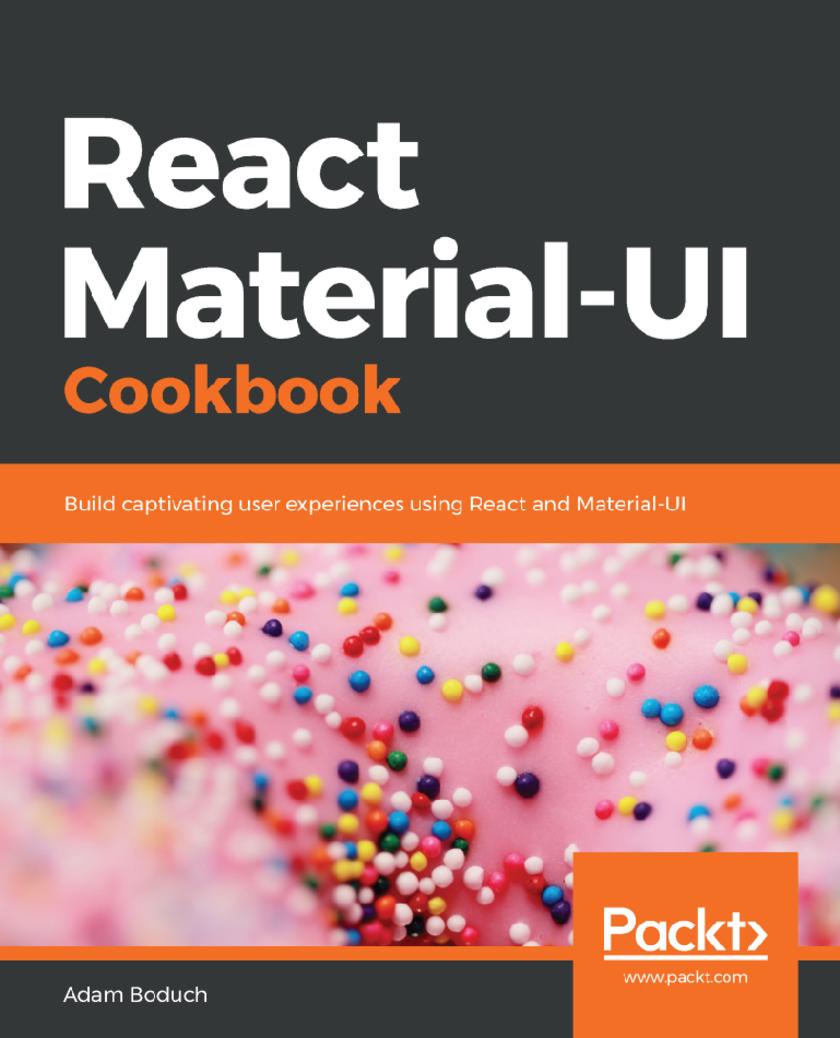
React Material-UI Cookbook
¥73.02
Build modern day application by implementing Material Design principles in React applications using Material-UI. Key Features * Grasp the needs React components for UI elements * Master the style and theme of the tools to go along with these components * Get to grips with all the React best practices to build a modern application Book Description Material-UI is a component library for rendering UI elements, using modern best practices from React and Material Design. This book will show you how you can create impressive and captivating modern day web apps by implementing Material Design considerations. The primary objective of this book is to help you use several Material-UI components to build larger UI functionality. We will also focus on React best practices in conjunction with Material-UI components – using state, context, and other new React 16.8 features properly. This book will start with layout and navigation and then dive into presenting the information with Material-UI components. It will then talk about the different components for user interactions. By the end of this book, you will know how to improve the look and feel of your applications using Material-UI components. What you will learn * Learn to build the overall structure and navigation for your Material-UI app * Learn to present simple and complex information in a variety of ways * Build interactive and intuitive controls * Design portable themes and styles for all of your Material-UI apps * Group content into sections using tabs and expansion panels * Learn how to design a general page layout with Material-UI grids * Use lists for complex data, and cards for detailed information Who this book is for They are JavaScript developers who have some basic knowledge of React and would want to implement Material Design principles in React applications using Material-UI. The reader wants to build a user interface using React components but doesn’t want to invent their own style or UX framework.
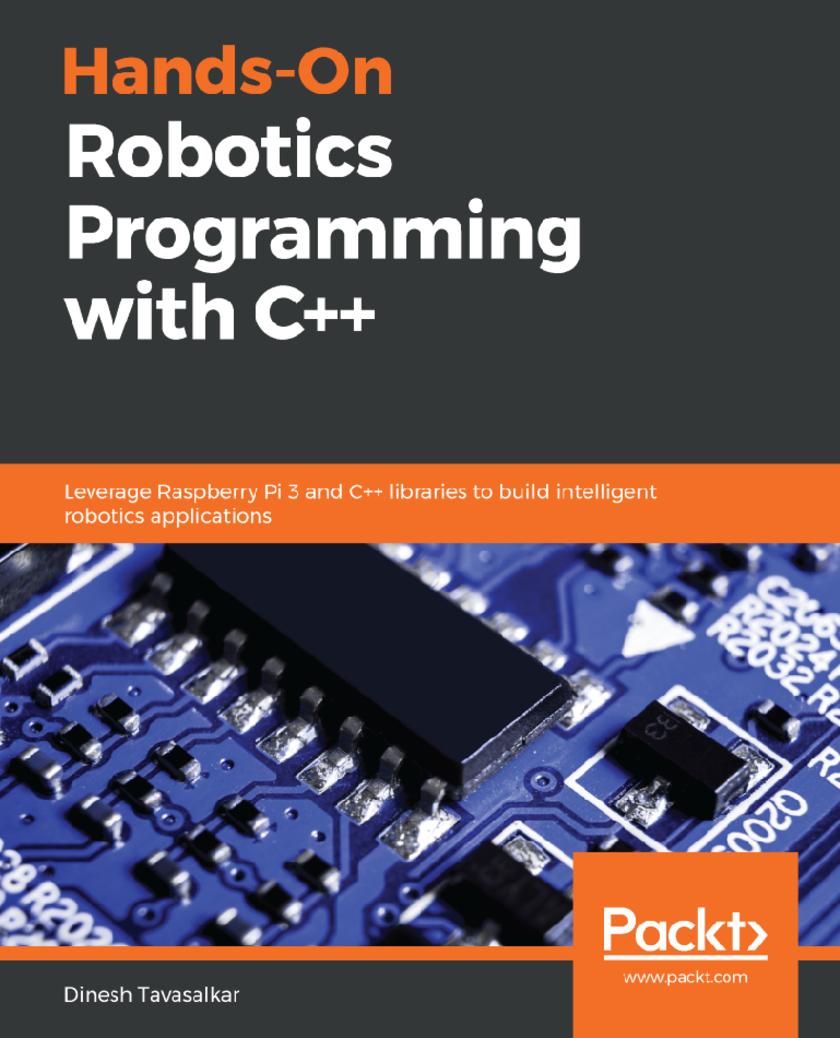
Hands-On Robotics Programming with C++
¥73.02
Enhance your programming skills to build exciting robotic projects Key Features * Build an intelligent robot that can detect and avoid obstacles and respond to voice commands * Detect and track objects and faces using OpenCV * Control your robot with a GUI button designed using Qt5 Book Description C++ is one of the most popular legacy programming languages for robotics, and a combination of C++ and robotics hardware is used in many leading industries. This book will bridge the gap between Raspberry Pi and C/C++ programming and enable you to develop applications for Raspberry Pi. To follow along with the projects covered in the book, you can implement C programs in Raspberry Pi with the wiringPi library. With this book, you’ll develop a fully functional car robot and write programs to move it in different directions. You’ll then create an obstacle - avoiding robot using an ultrasonic sensor. Furthermore, you’ll find out how to control the robot wirelessly using your PC/Mac. This book will also help you work with object detection and tracking using OpenCV, and guide you through exploring face detection techniques. Finally, you will create an Android app and control the robot wirelessly with an Android smartphone. By the end of this book, you will have gained experience in developing a robot using Raspberry Pi and C/C++ programming. What you will learn * Install software in Raspberry Pi compatible with C++ programming * Program the Raspberry Pi in C++ to run a motor * Control RPi-powered robot wirelessly with your laptop or PC * Program an RPi camera using OpenCV Control a Raspberry Pi robot with voice commands * Implement face and object detection with Raspberry Pi Who this book is for This book is for developers, programmers, and robotics enthusiasts interested in leveraging C++ to build exciting robotics applications. Prior knowledge of C++ is necessary to understand the projects covered in this book.
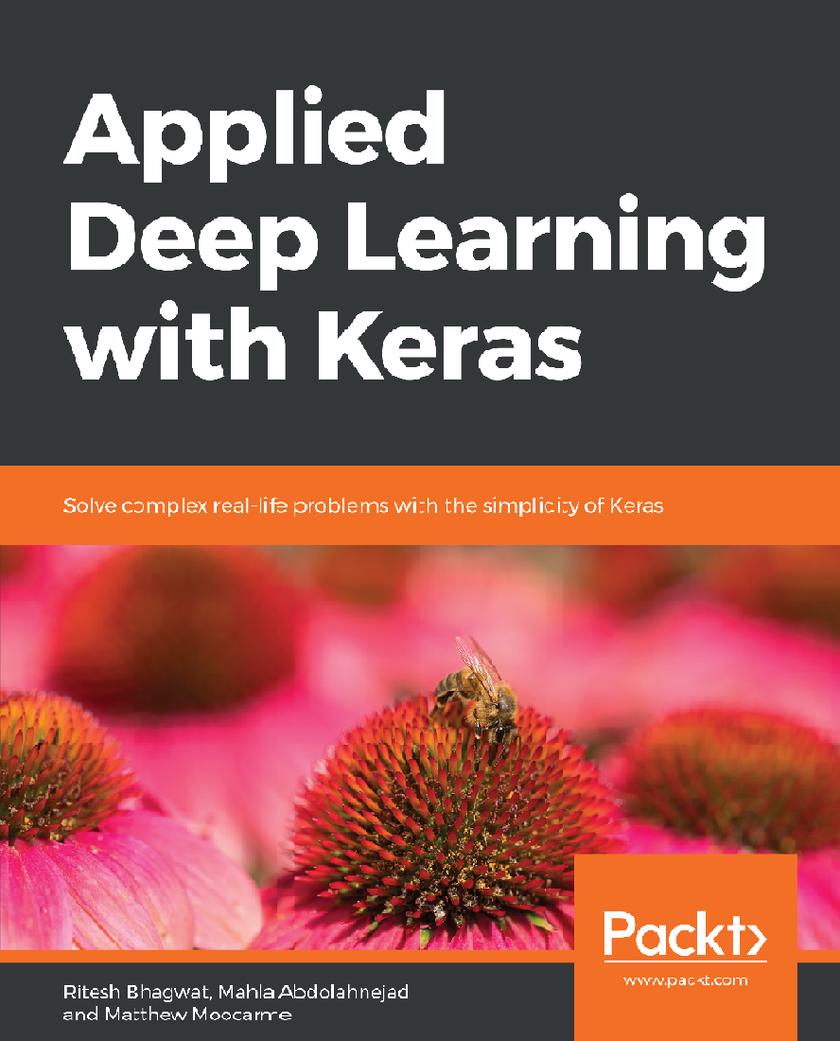
Applied Deep Learning with Keras
¥62.12
Take your neural networks to a whole new level with the simplicity and modularity of Keras, the most commonly used high-level neural networks API. Key Features * Solve complex machine learning problems with precision * Evaluate, tweak, and improve your deep learning models and solutions * Use different types of neural networks to solve real-world problems Book Description Though designing neural networks is a sought-after skill, it is not easy to master. With Keras, you can apply complex machine learning algorithms with minimum code. Applied Deep Learning with Keras starts by taking you through the basics of machine learning and Python all the way to gaining an in-depth understanding of applying Keras to develop efficient deep learning solutions. To help you grasp the difference between machine and deep learning, the book guides you on how to build a logistic regression model, first with scikit-learn and then with Keras. You will delve into Keras and its many models by creating prediction models for various real-world scenarios, such as disease prediction and customer churning. You’ll gain knowledge on how to evaluate, optimize, and improve your models to achieve maximum information. Next, you’ll learn to evaluate your model by cross-validating it using Keras Wrapper and scikit-learn. Following this, you’ll proceed to understand how to apply L1, L2, and dropout regularization techniques to improve the accuracy of your model. To help maintain accuracy, you’ll get to grips with applying techniques including null accuracy, precision, and AUC-ROC score techniques for fine tuning your model. By the end of this book, you will have the skills you need to use Keras when building high-level deep neural networks. What you will learn * Understand the difference between single-layer and multi-layer neural network models * Use Keras to build simple logistic regression models, deep neural networks, recurrent neural networks, and convolutional neural networks * Apply L1, L2, and dropout regularization to improve the accuracy of your model * Implement cross-validate using Keras wrappers with scikit-learn * Understand the limitations of model accuracy Who this book is for If you have basic knowledge of data science and machine learning and want to develop your skills and learn about artificial neural networks and deep learning, you will find this book useful. Prior experience of Python programming and experience with statistics and logistic regression will help you get the most out of this book. Although not necessary, some familiarity with the scikit-learn library will be an added bonus.
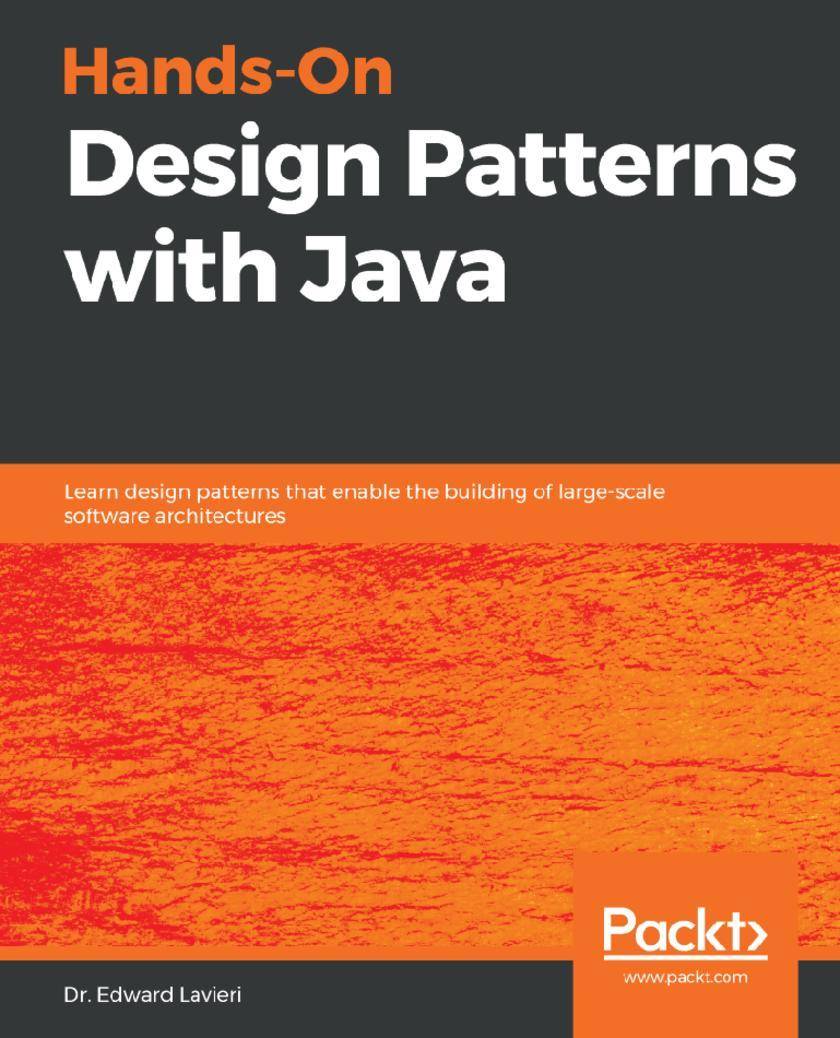
Hands-On Design Patterns with Java
¥70.84
Understand Gang of Four, architectural, functional, and reactive design patterns and how to implement them on modern Java platforms, such as Java 12 and beyond Key Features * Learn OOP, functional, and reactive patterns for creating readable and maintainable code * Explore architectural patterns and practices for building scalable and reliable applications * Tackle all kinds of performance-related issues and streamline development using design patterns Book Description Java design patterns are reusable and proven solutions to software design problems. This book covers over 60 battle-tested design patterns used by developers to create functional, reusable, and flexible software. Hands-On Design Patterns with Java starts with an introduction to the Unified Modeling Language (UML), and delves into class and object diagrams with the help of detailed examples. You'll study concepts and approaches to object-oriented programming (OOP) and OOP design patterns to build robust applications. As you advance, you'll explore the categories of GOF design patterns, such as behavioral, creational, and structural, that help you improve code readability and enable large-scale reuse of software. You’ll also discover how to work effectively with microservices and serverless architectures by using cloud design patterns, each of which is thoroughly explained and accompanied by real-world programming solutions. By the end of the book, you’ll be able to speed up your software development process using the right design patterns, and you’ll be comfortable working on scalable and maintainable projects of any size. What you will learn * Understand the significance of design patterns for software engineering * Visualize software design with UML diagrams * Strengthen your understanding of OOP to create reusable software systems * Discover GOF design patterns to develop scalable applications * Examine programming challenges and the design patterns that solve them * Explore architectural patterns for microservices and cloud development Who this book is for If you are a developer who wants to learn how to write clear, concise, and effective code for building production-ready applications, this book is for you. Familiarity with the fundamentals of Java is assumed.
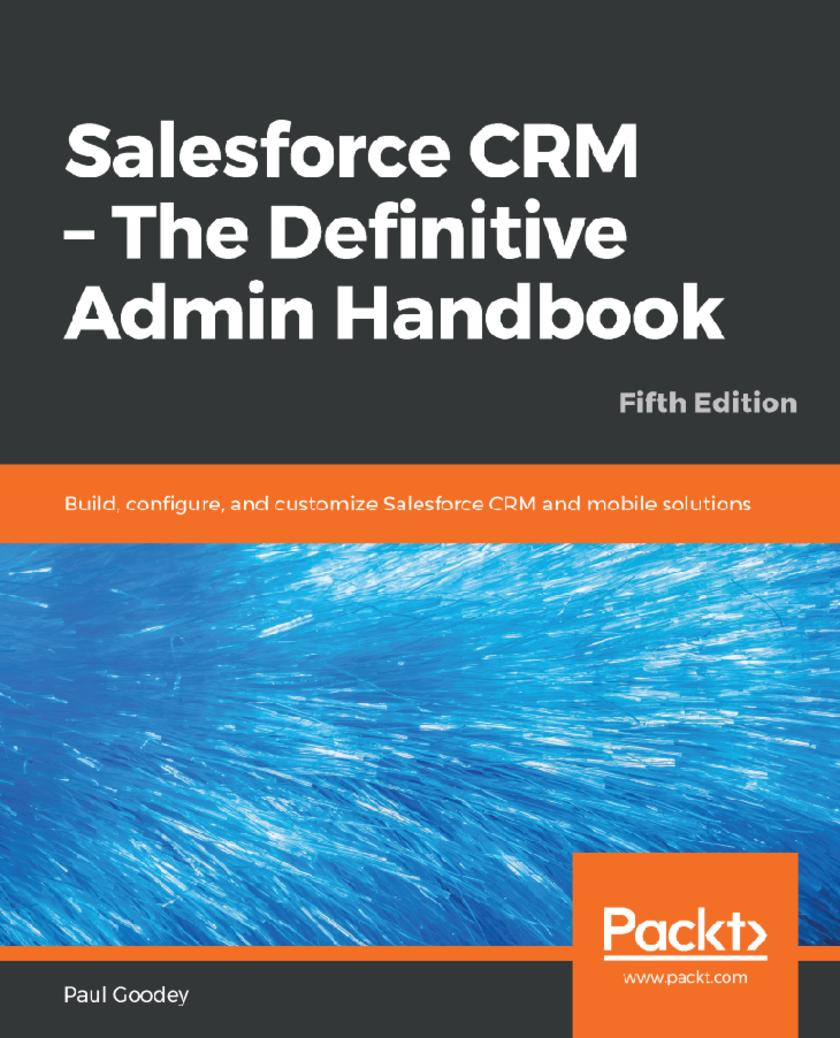
Salesforce CRM - The Definitive Admin Handbook
¥70.84
A definitive guide covering all the core concepts necessary to pass the Salesforce Administrator Certification exam Key Features * Understand critical design considerations for setting up Salesforce CRM * Facilitate and manage the transition from Salesforce Classic to Lightning Experience * Learn key functions of application security to manage user profiles and data Book Description Salesforce’s winter ’19 release offers a host of new features for CRM designed to meet your sales and marketing requirements. With this comprehensive guide to implementing Salesforce CRM, administrators of all levels can easily get a thorough understanding of the platform. This Salesforce handbook begins by guiding you in setting up users and security and then progresses to configuration, data management, and data analytics. You’ll discover process automation and approval mechanisms, while also exploring the functional areas of Sales Cloud, Service Cloud, Marketing Cloud, and Salesforce Chatter. This book covers Salesforce CRM system administration in a practical way, and it’ll serve as an invaluable reference for both new administrators and experienced professionals. Furthermore, you’ll also delve into Salesforce mobile apps and mobile administration, along with Salesforce Adoption Manager. You’ll gain insights into Lightning Experience, Salesforce's new app, and learn how its modern design and sleek interface helps you to build customizable components. Finally, we'll see how the two versions compare and help manage the transition from Salesforce Classic to Lightning Experience.?? By the end of the book, you will have mastered the techniques to configure and control various user interface features in Salesforce CRM. What you will learn * Configure a variety of user interface features in Salesforce CRM * Understand the capabilities of the Salesforce CRM sharing model * Explore Einstein Analytics - Salesforce's new wave of advanced reporting * Get to grips with the Lightning Process Builder workflow * Set up user profiles, security, and login access mechanisms * Find out how Apex and Visualforce coding can be used in Salesforce CRM * Manage the transition from Salesforce Classic to Lightning Experience * Implement data manipulation features to apply best practices in data management Who this book is for This book is for administrators who want to develop and strengthen their Salesforce CRM skills in the areas of configuration and system management. Whether you are a new or experienced professional, this book will enhance your knowledge and understanding of Salesforce CRM features.
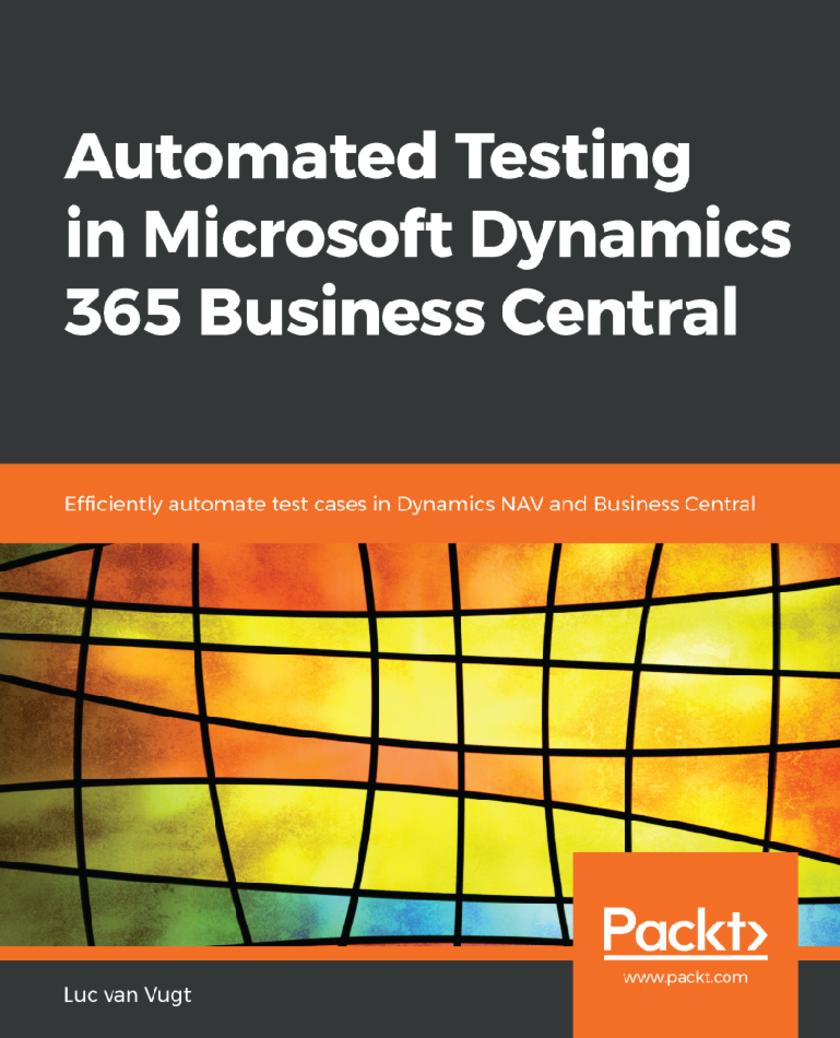
Automated Testing in Microsoft Dynamics 365 Business Central
¥44.68
Learn how to write automated tests for Dynamics 365 Business Central and see how to implement it in your daily work Key Features * Leverage automated testing to advance over traditional manual testing methods * Write, design, and implement automated tests * Explore various testing frameworks and tools compatible with Microsoft Dynamics 365 Business Central Book Description Dynamics 365 Business Central is the new cloud-based SaaS ERP proposition from Microsoft. It’s not as simple as it used to be way back when it was called Navigator, Navision Financials, or Microsoft Business Solutions-Navision. Our development practices are becoming more formal, and with this, the call for test automation is pressing on us. This book will teach you to leverage testing tools available with Dynamics 365 Business Central to perform automated testing. We’ll begin with a quick introduction to automated testing, followed by an overview of test automation in Dynamics 365 Business Central. Then you’ll learn to design and build automated tests and we’ll go through some efficient methods to get from requirements to application and testing code. Lastly, you’ll learn to incorporate your own and Microsoft tests into your daily development practice. By the end of the book, you’ll be able to write your own automated tests for Dynamics 365 Business Central. What you will learn * Understand what automated tests are, and when and why to use them * Explore the five pillars of the Testability Framework of Business Central * Design and write automated tests for Business Central * Make use of standard automated tests and their helper libraries * Integrate automated tests into your development practice Who this book is for This book is for consultants, testers, developers, and development managers working with Microsoft Dynamics NAV and Business Central. Being a book on automated testing techniques, it also caters to both functional and technical development teams.
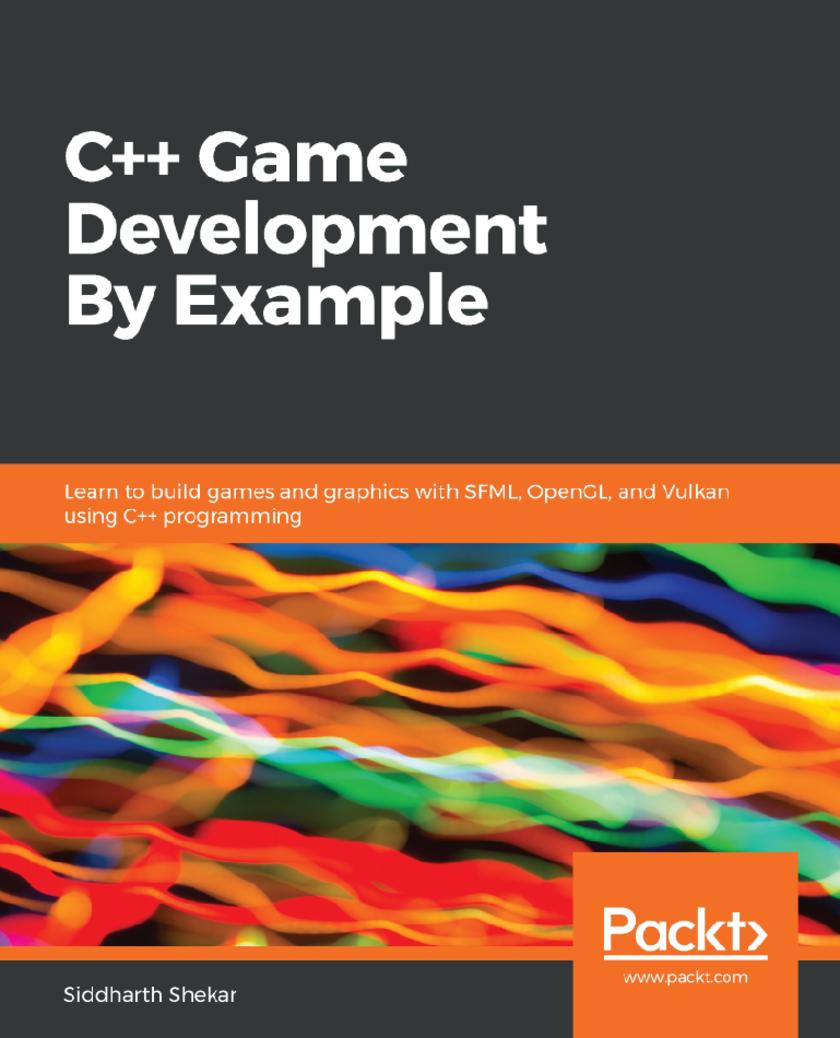
C++ Game Development By Example
¥62.12
Explore modern game programming and rendering techniques to build games using C++ programming language and its popular libraries Key Features * Learn how you can build basic 2D and complex 3D games with C++ * Understand shadows, texturing, lighting, and rendering in 3D game development using OpenGL * Uncover modern graphics programming techniques and GPU compute methods using the Vulkan API Book Description Although numerous languages are currently being used to develop games, C++ remains the standard for fabricating expert libraries and tool chains for game development. This book introduces you to the world of game development with C++. C++ Game Development By Example starts by touching upon the basic concepts of math, programming, and computer graphics and creating a simple side-scrolling action 2D game. You'll build a solid foundation by studying basic game concepts such as creating game loops, rendering 2D game scenes using SFML, 2D sprite creation and animation, and collision detection. The book will help you advance to creating a 3D physics puzzle game using modern OpenGL and the Bullet physics engine. You'll understand the graphics pipeline, which entails creating 3D objects using vertex and index buffers and rendering them to the scene using vertex and fragment shaders. Finally, you'll create a basic project using the Vulkan library that'll help you get to grips with creating swap chains, image views, render passes, and frame buffers for building high-performance graphics in your games. By the end of this book, you’ll be ready with 3 compelling projects created with SFML, the Vulkan API, and OpenGL, and you'll be able take your game and graphics programming skills to the next level. What you will learn * Understand shaders and how to write a basic vertex and fragment shader * Build a Visual Studio project and add SFML to it * Discover how to create sprite animations and a game character class * Add sound effects and background music to your game * Grasp how to integrate Vulkan into Visual Studio * Create shaders and convert them to the SPIR-V binary format Who this book is for If you’re a developer keen to learn game development with C++ or get up to date with game development, this book is for you. Some knowledge of C++ programming is assumed.

Learn D3.js
¥62.12
Explore the power of D3.js 5 and its integration with web technologies for building rich and interactive data visualization solutions Key Features * Explore the latest D3.js 5 for creating charts, plots, and force-directed graphics * Practical guide for creating interactive graphics and data-driven apps with JavaScript * Build Real-time visualization and transition on web using SVG with D3.js Book Description This book is a practical hands-on introduction to D3 (Data-driven Documents): the most popular open-source JavaScript library for creating interactive web-based data visualizations. Based entirely on open web standards, D3 provides an integrated collection of tools for efficiently binding data to graphical elements. If you have basic knowledge of HTML, CSS and JavaScript you can use D3.js to create beautiful interactive web-based data visualizations. D3 is not a charting library. It doesn’t contain any pre-defined chart types, but can be used to create whatever visual representations of data you can imagine. The goal of this book is to introduce D3 and provide a learning path so that you obtain a solid understanding of its fundamental concepts, learn to use most of its modules and functions, and gain enough experience to create your own D3 visualizations. You will learn how to create bar, line, pie and scatter charts, trees, dendograms, treemaps, circle packs, chord/ribbon diagrams, sankey diagrams, animated network diagrams, and maps using different geographical projections. Fundamental concepts are explained in each chapter and then applied to a larger example in step-by-step tutorials, complete with full code, from hundreds of examples you can download and run. This book covers D3 version 5 and is based on ES2015 JavaScript. What you will learn * Learn to use D3.js version 5 and web standards to create beautiful interactive data-driven visualizations for the web * Bind data to DOM elements, applying different scales, color schemes and configuring smooth animated transitions for data updates * Generate data structures and layouts for many popular chart formats * Apply interactive behaviors to any chart * Create thematic maps based on GIS data using different geographical projections with interactive behaviors * Load, parse and transform data from JSON and CSV formats Who this book is for The book is intended for web developers, web designers, data scientists, artists, and any developer who wish to create interactive data visualization for the Web using D3. The book assumes basic knowledge of HTML, CSs, and JavaScript.
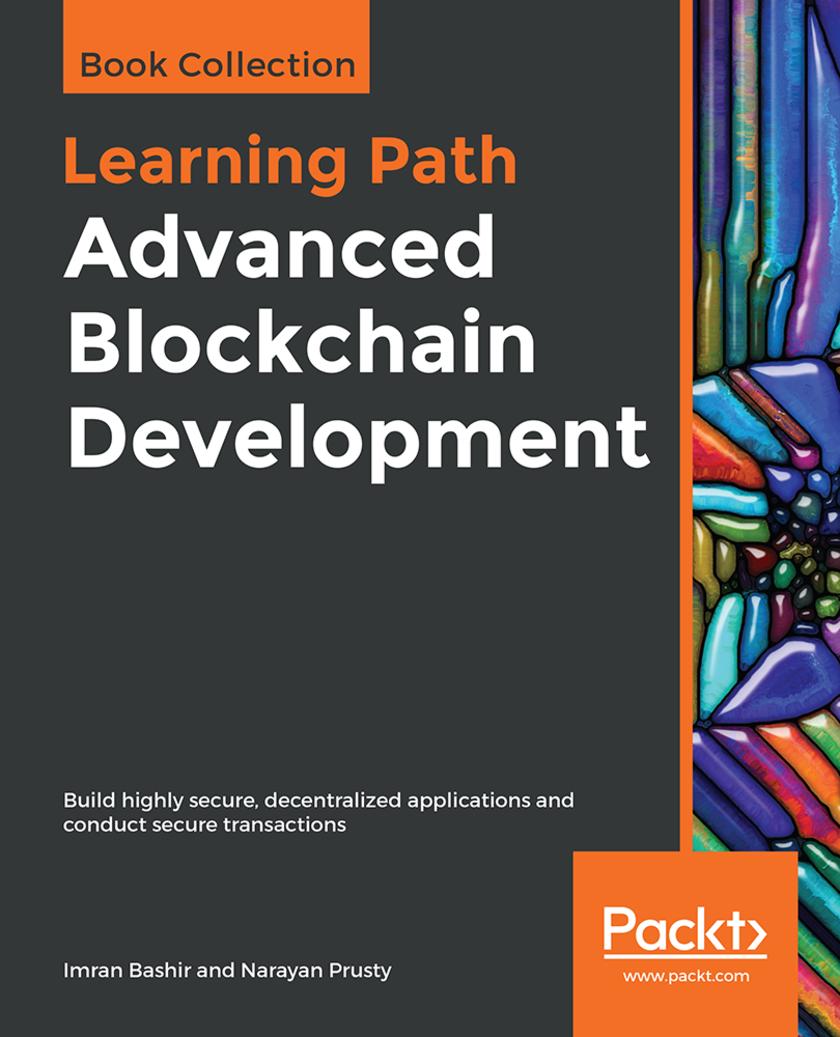
Advanced Blockchain Development
¥88.28
Explore distributed ledger technology, decentralization, and smart contracts and develop real-time decentralized applications with Ethereum and Solidity Key Features * Get to grips with the underlying technical principles and implementations of blockchain * Build powerful applications using Ethereum to secure transactions and create smart contracts * Gain advanced insights into cryptography and cryptocurrencies Book Description Blockchain technology is a distributed ledger with applications in industries such as finance, government, and media. This Learning Path is your guide to building blockchain networks using Ethereum, JavaScript, and Solidity. You will get started by understanding the technical foundations of blockchain technology, including distributed systems, cryptography and how this digital ledger keeps data secure. Further into the chapters, you’ll gain insights into developing applications using Ethereum and Hyperledger. As you build on your knowledge of Ether security, mining , smart contracts, and Solidity, you’ll learn how to create robust and secure applications that run exactly as programmed without being affected by fraud, censorship, or third-party interference. Toward the concluding chapters, you’ll explore how blockchain solutions can be implemented in applications such as IoT apps, in addition to its use in currencies. The Learning Path will also highlight how you can increase blockchain scalability and even discusses the future scope of this fascinating and powerful technology. By the end of this Learning Path, you'll be equipped with the skills you need to tackle pain points encountered in the blockchain life cycle and confidently design and deploy decentralized applications. This Learning Path includes content from the following Packt products: * Mastering Blockchain - Second Edition by Imran Bashir * Building Blockchain Projects by Narayan Prusty What you will learn * Understand why decentralized applications are important * Discover the mechanisms behind bitcoin and alternative cryptocurrencies * Master how cryptography is used to secure data with the help of examples * Maintain, monitor, and manage your blockchain solutions * Create Ethereum wallets * Explore research topics and the future scope of blockchain technology Who this book is for This Learning Path is designed for blockchain developers who want to build decentralized applications and smart contracts from scratch using Hyperledger. Basic familiarity with any programming language will be useful to get started with this Learning Path.
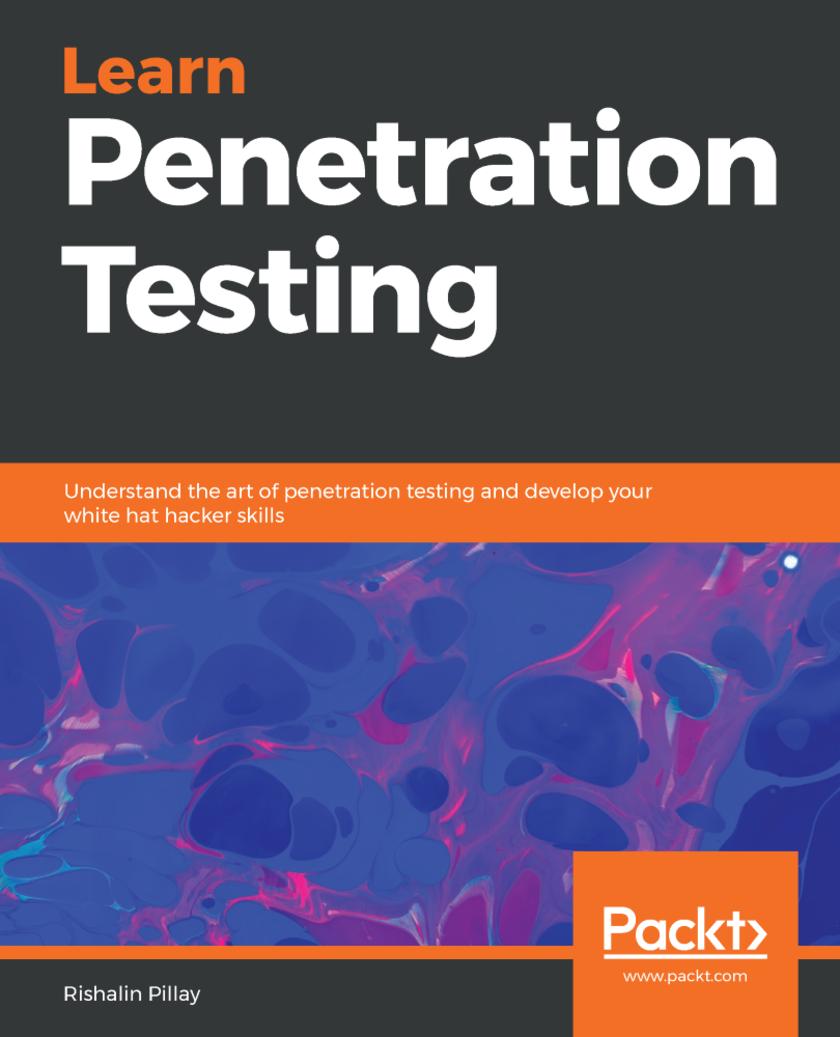
Learn Penetration Testing
¥70.84
Get up to speed with various penetration testing techniques and resolve security threats of varying complexity Key Features * Enhance your penetration testing skills to tackle security threats * Learn to gather information, find vulnerabilities, and exploit enterprise defenses * Navigate secured systems with the most up-to-date version of Kali Linux (2019.1) and Metasploit (5.0.0) Book Description Sending information via the internet is not entirely private, as evidenced by the rise in hacking, malware attacks, and security threats. With the help of this book, you'll learn crucial penetration testing techniques to help you evaluate enterprise defenses. You'll start by understanding each stage of pentesting and deploying target virtual machines, including Linux and Windows. Next, the book will guide you through performing intermediate penetration testing in a controlled environment. With the help of practical use cases, you'll also be able to implement your learning in real-world scenarios. By studying everything from setting up your lab, information gathering and password attacks, through to social engineering and post exploitation, you'll be able to successfully overcome security threats. The book will even help you leverage the best tools, such as Kali Linux, Metasploit, Burp Suite, and other open source pentesting tools to perform these techniques. Toward the later chapters, you'll focus on best practices to quickly resolve security threats. By the end of this book, you'll be well versed with various penetration testing techniques so as to be able to tackle security threats effectively What you will learn * Perform entry-level penetration tests by learning various concepts and techniques * Understand both common and not-so-common vulnerabilities from an attacker's perspective * Get familiar with intermediate attack methods that can be used in real-world scenarios * Understand how vulnerabilities are created by developers and how to fix some of them at source code level * Become well versed with basic tools for ethical hacking purposes * Exploit known vulnerable services with tools such as Metasploit Who this book is for If you’re just getting started with penetration testing and want to explore various security domains, this book is for you. Security professionals, network engineers, and amateur ethical hackers will also find this book useful. Prior knowledge of penetration testing and ethical hacking is not necessary.

Hands-On Time Series Analysis with R
¥62.12
Build efficient forecasting models using traditional time series models and machine learning algorithms. Key Features * Perform time series analysis and forecasting using R packages such as Forecast and h2o * Develop models and find patterns to create visualizations using the TSstudio and plotly packages * Master statistics and implement time-series methods using examples mentioned Book Description Time series analysis is the art of extracting meaningful insights from, and revealing patterns in, time series data using statistical and data visualization approaches. These insights and patterns can then be utilized to explore past events and forecast future values in the series. This book explores the basics of time series analysis with R and lays the foundations you need to build forecasting models. You will learn how to preprocess raw time series data and clean and manipulate data with packages such as stats, lubridate, xts, and zoo. You will analyze data and extract meaningful information from it using both descriptive statistics and rich data visualization tools in R such as the TSstudio, plotly, and ggplot2 packages. The later section of the book delves into traditional forecasting models such as time series linear regression, exponential smoothing (Holt, Holt-Winter, and more) and Auto-Regressive Integrated Moving Average (ARIMA) models with the stats and forecast packages. You'll also cover advanced time series regression models with machine learning algorithms such as Random Forest and Gradient Boosting Machine using the h2o package. By the end of this book, you will have the skills needed to explore your data, identify patterns, and build a forecasting model using various traditional and machine learning methods. What you will learn * Visualize time series data and derive better insights * Explore auto-correlation and master statistical techniques * Use time series analysis tools from the stats, TSstudio, and forecast packages * Explore and identify seasonal and correlation patterns * Work with different time series formats in R * Explore time series models such as ARIMA, Holt-Winters, and more * Evaluate high-performance forecasting solutions Who this book is for Hands-On Time Series Analysis with R is ideal for data analysts, data scientists, and all R developers who are looking to perform time series analysis to predict outcomes effectively. A basic knowledge of statistics is required; some knowledge in R is expected, but not mandatory.
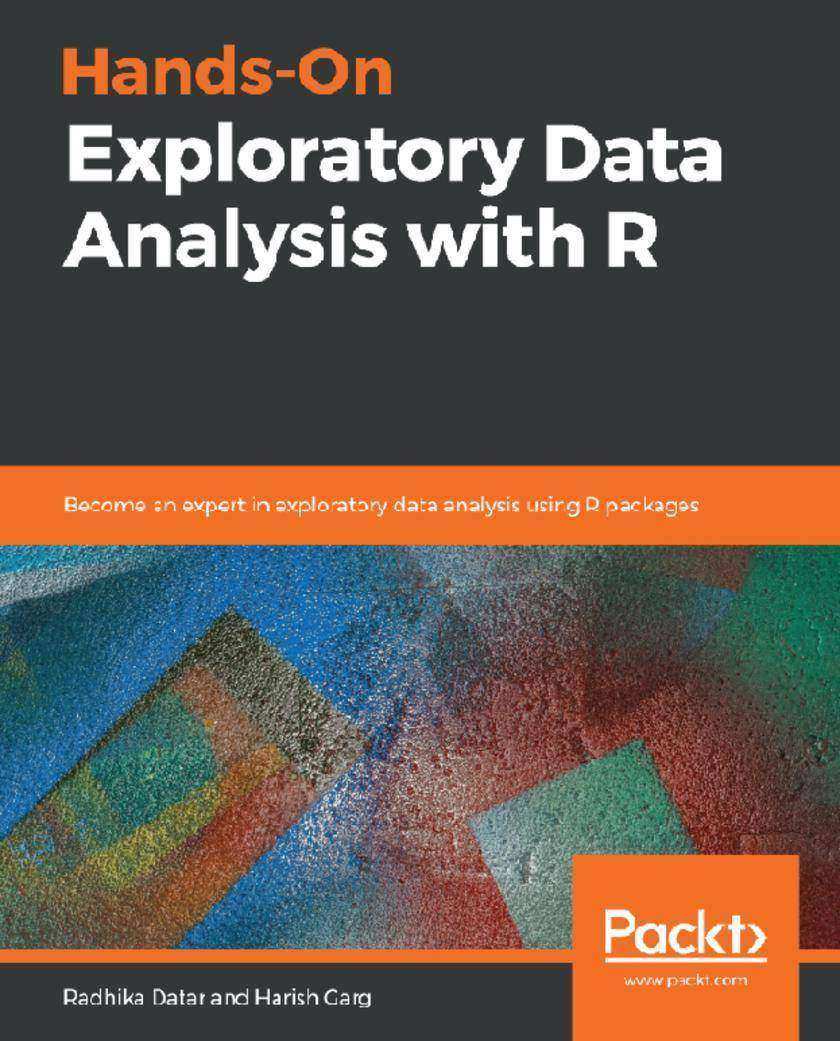
Hands-On Exploratory Data Analysis with R
¥53.40
Learn exploratory data analysis concepts using powerful R packages to enhance your R data analysis skills Key Features * Speed up your data analysis projects using powerful R packages and techniques * Create multiple hands-on data analysis projects using real-world data * Discover and practice graphical exploratory analysis techniques across domains Book Description Hands-On Exploratory Data Analysis with R will help you build not just a foundation but also expertise in the elementary ways to analyze data. You will learn how to understand your data and summarize its main characteristics. You'll also uncover the structure of your data, and you'll learn graphical and numerical techniques using the R language. This book covers the entire exploratory data analysis (EDA) process—data collection, generating statistics, distribution, and invalidating the hypothesis. As you progress through the book, you will learn how to set up a data analysis environment with tools such as ggplot2, knitr, and R Markdown, using tools such as DOE Scatter Plot and SML2010 for multifactor, optimization, and regression data problems. By the end of this book, you will be able to successfully carry out a preliminary investigation on any dataset, identify hidden insights, and present your results in a business context. What you will learn * Learn powerful R techniques to speed up your data analysis projects * Import, clean, and explore data using powerful R packages * Practice graphical exploratory analysis techniques * Create informative data analysis reports using ggplot2 * Identify and clean missing and erroneous data * Explore data analysis techniques to analyze multi-factor datasets Who this book is for Hands-On Exploratory Data Analysis with R is for data enthusiasts who want to build a strong foundation for data analysis. If you are a data analyst, data engineer, software engineer, or product manager, this book will sharpen your skills in the complete workflow of exploratory data analysis.
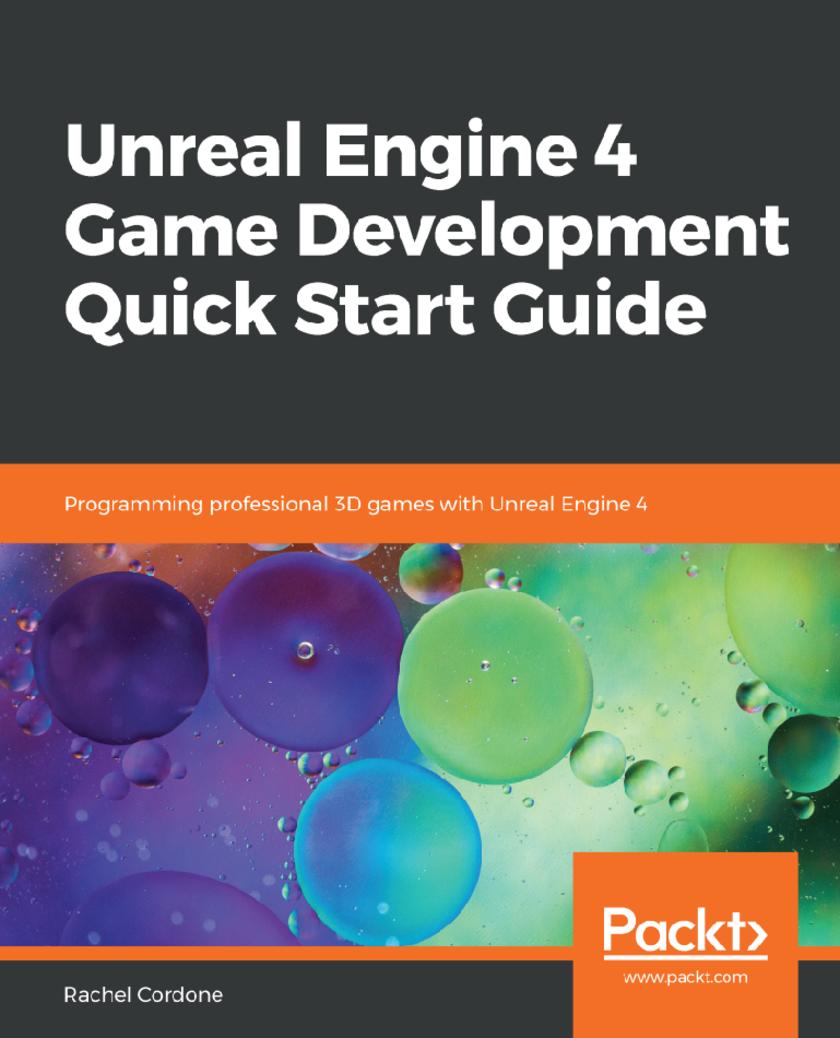
Unreal Engine 4 Game Development Quick Start Guide
¥44.68
Learn how to use Unreal Engine 4 by building 3D and multiplayer games using Blueprints Key Features * Learn the fundamentals of Unreal Engine such as project templates, Blueprints, and C++ * Learn to design games; use UMG to create menus and HUDs, and replication to create multiplayer games * Build dynamic game elements using Animation Blueprints and Behavior Trees Book Description Unreal Engine is a popular game engine for developers to build high-end 2D and 3D games. This book is a practical guide, starting off by quickly introducing you to the Unreal Engine 4 (UE4) ecosystem. You will learn how to create Blueprints and C++ code to define your game's functionality. You will be familiarized with the core systems of UE4 such as UMG, Animation Blueprints, and Behavior Trees. You will also learn how to use replication to create multiplayer games. By the end of this book, you will have a broad, solid knowledge base to expand upon on your journey with UE4. What you will learn * Use project templates to give your game a head start * Create custom Blueprints and C++ classes and extend from Epic's base classes * Use UMG to create menus and HUDs for your game * Create more dynamic characters using Animation Blueprints * Learn how to create complex AI with Behavior Trees * Use replication to create multiplayer games * Optimize, test, and deploy a UE4 project Who this book is for Readers who already have some game development experience and Unity users who would like to try UE4 will all benefit from this book. Knowledge of basic Object-Oriented Programming topics such as variables, functions, and classes is assumed.




 购物车
购物车 个人中心
个人中心



